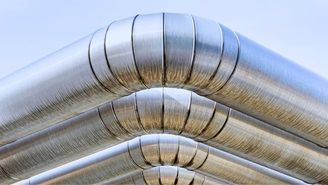The destructive California wildfires in November 2018 once again focused investor attention on climate-change related risks. PG&E, the largest utility in the United States, has stated the fires were very likely caused by its equipment. The company has since announced it will file for bankruptcy protection at the end of January in what is being called the highest profile climate-change bankruptcy to date. The company’s expected liabilities from the devastating wildfires in 2017 and 2018 are estimated at over USD 30 billion and the company’s share price has dropped by over 90% since before the 2017 fire. It is currently unclear what would happen in the event of PG&E filing for bankruptcy protection, but state legislators have mentioned the possibility of breaking up the utility, selling off assets, or converting it to a publicly-owned company.
A Look at PG&E’s Risk Exposure
California utilities are highly exposed to wildfire risk for two reasons. First, California has experienced exceptional droughts in recent years, causing tinder-dry conditions across the state for longer periods. These conditions result in larger, more dangerous fires that are difficult to extinguish. Second, unlike in other states, utilities in California can be held liable for damage caused by their equipment, even if all regulations were followed (this is known as inverse condemnation). In the case of wildfires, this has historically meant utilities were on the hook for fires sparked by electrical wires or other equipment. PG&E had frequently faced liabilities for fires before, but the 2017 and 2018 were much larger and deadlier.
The Role of Risk Management
PG&E has had a long history of serious safety issues. Based on our controversy assessments, which range from 1 (low) to 5 (severe), [i] Sustainalytics has rated PG&E as Category 4 or higher on Quality and Safety since the company’s 2010 San Bruno pipeline disaster. It was revealed that the company falsified pipeline safety data over a long period up to 2017, even during an investigation into the 2010 blast. PG&E was also found guilty of willful violation of pipeline safety regulations and obstructing a federal investigation. The company is currently under a five-year probation program, whereby it must submit to compliance and ethics monitoring.
In 2017, a detailed report of PG&E’s safety culture found that the company lacked a clear vision for safety, calling efforts “disjointed,” “somewhat reactionary,” and lacking a comprehensive focus. The report also noted a cultural divide between managers and field personnel, where management safety initiatives were not fully implemented in the field, or in some cases, field locations were working to address safety issues on their own. High management turnover was also noted to be an issue by the report.
Following the 2018 fire, the California regulator broadened its investigation into the company’s safety practices, including corporate governance, structure and operations. While the wildfire risk in California was extreme, the company’s safety record suggests there may also be ongoing shortcomings in safety management in its Electrical division. Three senior executives in the Electrical division are scheduled to retire in late January, a few weeks after the company announced it would file for bankruptcy, and CEO Geisha Williams also stepped down ahead of the announcement.
Sustainalytics’ Rating and Outlook
Sustainalytics downgraded the outlook for PG&E on Quality and Safety to Category 4 Negative in August 2018, based on both evidence of escalating liability from the 2017 fire and in anticipation of similar fires in the 2018 season. The rating was downgraded again to Category 5 in November 2018 as the severity of the deadly wildfire became apparent.
In December 2018, PG&E submitted a funding proposal for a comprehensive wildfire safety plan to the regulator (more than a year after the devastating 2017 fires and somewhat slower than the other major California utility, Edison International). The major infrastructure improvements and operational preparedness outlined is these proposals should reduce the risk of wildfires. However, given the scale of these companies’ infrastructure, these plans will take several years to implement.
For PG&E, wildfire risk will remain highly material for years to come, and there is a real risk the company could incur liabilities in the 2019 and 2020 wildfire season comparable to recent years. We consider Product Governance, which includes safety issues, to be a highly material ESG issue for the Utilities sector, and Sustainalytics’ ESG Risk Rating score for PG&E is ‘Severe’, based on the existential threat these liabilities pose to the company.
The analysis of company incidents and controversies can provide insights and spark questions about material risk factors within an industry or for a company. In the case of PG&E, the company’s controversy rating had flagged significant concerns for over a decade, and wildfires have had an increasingly large impact for several years. Emerging issues, including those driven by changing climatic conditions, will require ongoing assessment to determine how they might manifest as material impacts for companies.
[i] Sustainalytics assesses corporate controversies on a scale from 1 (low) to 5 (severe). Ratings assess both impact to stakeholders and risk to the company. High level controversies also include an outlook assessment of anticipated rating changes in the coming 12-24 months.
Recent Content
DEI Rollbacks: Impact on ESG Risk Ratings and Broader Implications for Investors
This article covers how not all reported rollbacks in diversity, equity, and inclusion (DEI) initiatives will have the same impact. Due to the relatively low weight of DEI in Sustainalytics’ ESG Risk Rating, we do not anticipate significant changes to overall ratings.
Industrial-Scale Decarbonization in the EU: Stewardship Field Notes From Germany, France and Spain
This article covers how Morningstar Sustainalytics’ Stewardship Team embarked on a field trip in November 2024 to learn how EU industry leaders are navigating the complex challenges of the energy transition.








